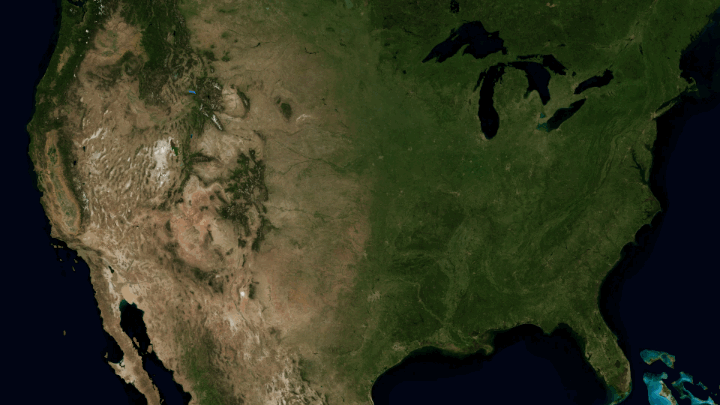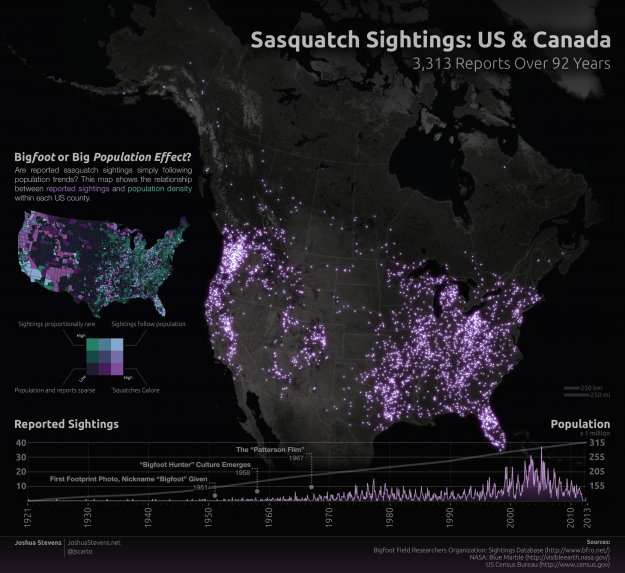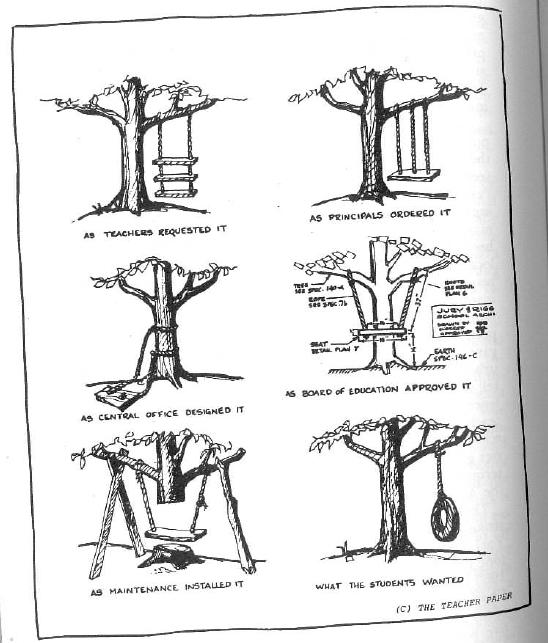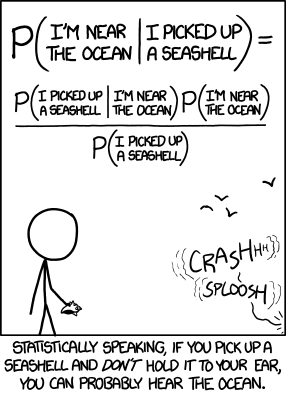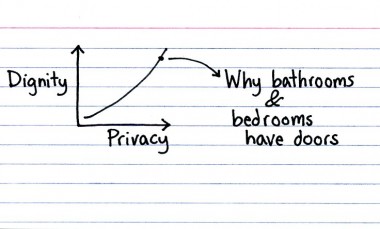What a week: Ted Cruz wishes America had 100 more senators like Jesse Helms.
1. Ted Cruz: We need 100 more like Jesse Helms in the Senate.
Ted Cruz gave a huge shout-out to North Carolina’s late unrepentant racist senator, Jesse Helms. Granted, it was at the Heritage Foundation’s annual Helms lecture, so he wasn’t the only person in the room who worshipped Helms. But he did give a somewhat strange reason for being so fond of the bigot, and wishing there were “100 more” like him in the U.S. Senate.
Apparently the actor John Wayne had praised Helms for being willing to say “Crazy things,” Cruz told the audience. “The willingness to say all those crazy things is a rare, rare characteristic in this town, and you know what? It’s every bit as true now as it was then.”
For those who don’t remember, here are some of the fun-filled, wacky things Helms said and did:
- He sang the confederate anthem “Dixie” in an elevator with Carol Moseley-Braun, the African-American senator from Illinois, and told Sen. Orrin Hatch in front of her that he was trying to make her cry.
- He opposed integration, or “mixing of the races,” and called the University of North Carolina the “University of Negroes and Communists” because it was integrated.
- He led a one-man, 16-day filibuster opposing the designation of Martin Luther King, Jr. Day as a holiday, and threatened to lead one to save South African apartheid.
- More comically, as chairman of the Senate Foreign Relations Committee, he seemed unable to absorb the fact that the North Korean president’s name was Kim Jong Il, not Kim Jong 2.
- Unlike other like-minded Southern politicians Strom Thurmond and George Wallace, Helms never disavowed his racist, segregationist views even on his deathbed in 2008.
One hundred more.
2. Glenn Beck: War is a progressive idea so I am now against it.
Does the radio host and one of the far-right’s most hilarious nut-jobs have any core principles? Does he attach real meaning to actual words? Or does he just make it all up as he goes along? Rhetorical questions, yes, but he may have outdone himself this week when he injected some real seriousness into the deadly serious Syria debate. He just up and changed the meaning of the terms. Singlehandedly. He can do that, you know. He’s Glenn Beck.
So war is now a progressive idea, Beck says, because, of course, a Democratic president has proposed it. Apparently, the rest of the progressive community was not informed, since most of them, and most Americans oppose military intervention in Syria, but never mind. In other news, up is down and black is white. And good conservatives, like Beck are anti-war. It’s a sad day for Beck because he used to thoroughly enjoy how the U.S. would topple dictators and “spread democracy” by doing so, but that was before he realized that this is actually a form of the dreaded progressive thinking.
Sometimes, such mental gymnastics can lead to close encounters with shades of truth, as when the former Fox News personality explained he was against a Syrian invasion because it would be about oil, and that Obama is similar to Dick Cheney in this way.
3. Alex Jones: Globalist cyborgs are coming.
If there is anyone who can outweigh Beck on the looniness scale, that distinction would have to go to conspiracy theorist, fringe conservative radio host Alex Jones. His theory? The effort to avoid a U.S. attack on Syria with diplomacy was actually a United Nations plot for the extinction of the human race, which would be replaced by “globalists” like President Barack Obama who would become cyborgs by using “life-extension technologies.”
Hard to argue with that logic, seeing as it is neither logical, nor based in any sort of shared reality. It may be worth noting that Beck seems much more worried about a zombie invasion than one led by cyborgs.
Jones went on to explain that the proposal to bring Syria’s chemical weapons under the control of the international community was a way for the U.N. to “come into any country they want, that has any type of weapons systems—and call them WMDs, and then dismantle that country’s infrastructure.”
That’s because the U.N. is at the very head of the globalist conspiracy, he explains. The globalists are “the biggest, most organized, eugenics-based, scientific dictatorship, trans-humanists at the top that plan the extinction of almost everybody and a new species to rise up or humans merged with machines.”
“That’s their religion, and no one’s discussing that,” Jones added. “Everyone is going to be deindustrialized, everyone is going to be put back into the Stone Age and controlled. And Obama and the globalists and the robber barons, they’re going to fly around in their jetcopters and their Air Forces Ones and their red carpets, like gods above us. And they’re going to get the life-extension technologies.”
Any questions?
4. Stuart Varney and Monica Crowley: EPA is trying to suffocate children.
Fox News’ Monica Crowley and Stuart Varney were appalled, appalled I tell you, when they revealed the shocking news this week that the EPA, the evil government’s evil Environmental Protection Agency, is providing free lesson plans for “teachers looking to educate their students on climate change.”
“The EPA — the EPA,” said Varney. And they're aiming this “propaganda” directly at innocent middle-school children. Of course, these plans have been openly available online for months, but Crowley suspects there is a hidden agenda to this oh-so-sneaky plan. “Are they going to tell these kids to not exhale? Because every time you exhale, that’s carbon dioxide.”
And, carbon dioxide causes global warming, right? So learn to hold your breath, kids.
Well, no, not exactly. The good news is that very soon, kids will know a good deal more than Fox News does about climate change, although that is not saying much. The EPA materials do explain what carbon is and how it plays an important role in sustaining life on the planet. And how the burning of fossil fuels has led to a surplus of life-supporting gases like carbon dioxide, which has made the planet hotter. And other science-type things that no one at Fox News will ever be caught dead, reading or learning, in their indefatigable drive toward making America, hands-down, the dumbest hot country on the planet.
5. Minnesota archbishop: Satan is behind gay marriage.
Satan has been a very busy guy lately. No, that wasn’t him sawing heads off Syrian rebels in the public square or visiting plagues upon the beleaguered New Jersey shore. He had nothing to do with that creep who brands women’s vaginas to show he owns them. Mostly, he’s been concerning himself with spreading love, same-sex love. Love so strong it wants to get married. Apparently, Satan has not fully read his job description.
Lately, Lucifer has been spending time in Minnesota, where the archbishop of Minneapolis and St. Paul has announced that the devil is responsible for the legalization of marriage equality.
“Sodomy, abortion, contraception, pornography, the redefinition of marriage, and the denial of objective truth are just some of the forces threatening the stability of our civilisation,” Rev. John Nienstedt said in a recent speech to the Napa Institute Conference, and posted to the conference’s website Tuesday. “The source of these machinations is none other than the Father of Lies. Satan knows all too well the value that the family contributes to the fabric of a good solid society, as well as the future of God’s work on earth.”
Despite Nienstedt’s efforts, and because of Satan’s, Minnesota has been issuing same-sex marriage licenses since August.
Mwah hah ha ha ha. Isn’t that how the devil laughs?
6. Texas GOP gov. candidate tweets that Wendy Davis is “too stupid to be governor.”
From the totally ridiculous to the merely very offensive, the top political advisor to Texas Attorney General/would-be successor to Rick Perry, Greg Abbott has attacked Democratic opponent Wendy Davis’ intelligence in a tweet. This follows on the heels of Abbott’s tweeting thanks to a supporter for a sexist attack on Davis, which referred to her as “Retard Barbie” so, clearly a very nuanced, high-minded Republican campaign is evolving in the Lone Star state.
Dave Carney is the enlightened strategist in question, and he took the opportunity not just to call Davis stupid, but also to cheer the results of Tuesday’s Colorado recall elections. His tweet linked to an article in a conservative Texas blog slamming Davis' gun views, calling her “Abortion Barbie,” and dismissing her as “even dumber than her fake blonde hair would imply,” Think Progress reported.
7. Internet advice from a nobody who wants to ruin perfect strangers’ lives: Dads, don’t educate your daughters!
A Louisiana-based certified public accountant cares deeply about the purity of America’s young women, and he has figured out a solution to it. Keep them ignorant. In his spare time, the guy generously makes Internet videos filled with unwanted, unasked for and basically awful advice on how to raise your daughters.
First step in saving the family: Don’t send your daughters to college. Why? Because she is very likely to have sex there. “This is no small matter we’re dealing with here,” he implores fathers. “Is a degree worth the loss of your daughter’s purity, dignity, and soul?”
If they really want to learn, girls can go to the library or use the Internet, since neither of those can lead to genital contact, he allows.
But why bother getting educated, anyway? Jobs for women are not important, this wise sage continues: “My personal impression is that the day-to-day grind of a job is below the dignity of women. In a way, it is like being a hired hand, as a result of the fall and the penalty for original sin.”

Related Stories

